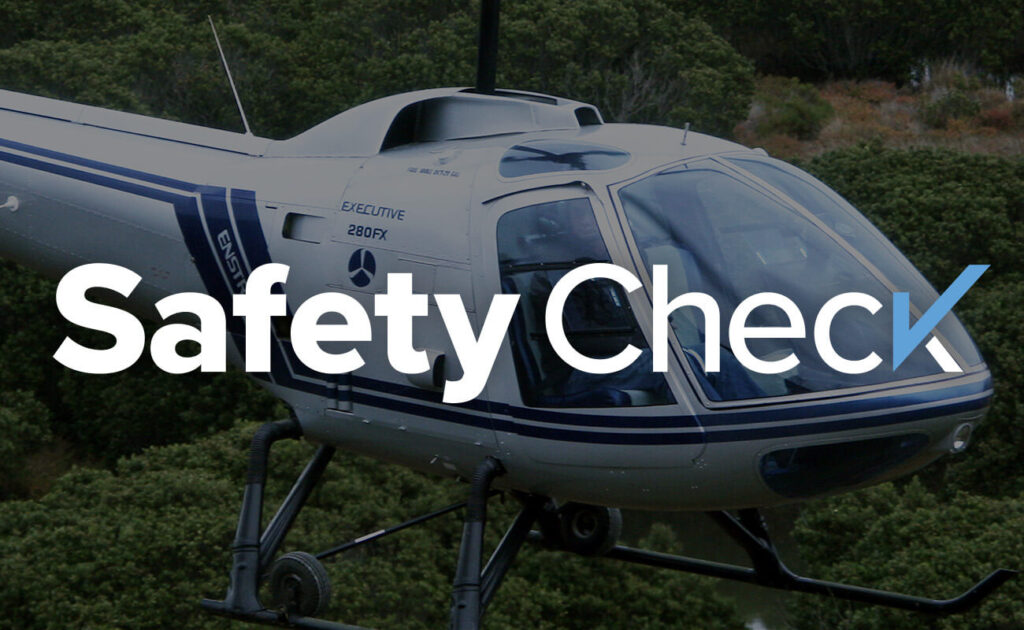Safety Check: It’s Time for Some Campaigning

This month saw Hoosier voters head to the polls for Indiana’s primary election season. With both parties’ candidates virtually locked in, we can expect the 2024 general election campaigns to shift into high gear, and with that, an increase in temporary flight restrictions (TFRs) across the campaign trail.
You’ll remember, that in last month’s newsletter, we highlighted Sports TFRs, which frequently come with a laundry list of exceptions. However, the Very Important People TFRs (reserved for high-ranking government officials) are typically strict no-fly zones.
We can break down VIP TFRs into two basic types: Presidential, reserved for the President of the United States, and Vice Presidential, which can apply to other government officials, not just the Vice President. FAR 91.141 governs both types of TFRs and generally won’t publicize the Notice to Airmen (NOTAM) until a few days prior to the event.
A big difference between Presidential and Vice-Presidential TFRs is the size of the rings. For Presidential movement, the TFR includes an outer ring of about 30 nautical miles and then one or more inner rings, typically about 8-10 nm. For Vice-Presidential movement, the TFRs are normally only 3 nm wide without an outer ring. The United States Secret Service will coordinate with FAA security to plot out the actual shape and dimensions.
The VIP TFR’s size, duration, and number of rings might also vary based on location, like in Class B airspace. The FAA will place one ring over the VIP’s arrival and departure airport and another over the path the VIP will take between these airports. While these rings are stationary, there are occasions where the FAA will create a rolling TFR to accommodate a moving event, such as one involving a train or bus.
The inner rings pose the most significant challenge for general aviation aircraft, which are not subject to TSA passenger and aircraft screening. GA aircraft can’t fly through these inner rings below 18,000 feet, meaning the pilots can’t land at any airport inside the TFR and must reroute to somewhere else until the TFR expires.
The outer rings tend to cause fewer headaches. GA aircraft are permitted within the outer limit if the pilot is on an IFR flight plan and in communication with air traffic control. However, just like with the Sports TFRs, you can’t loiter here. That means no flight training, practice approaches, or sightseeing tours.
Vice-Presidential TFRs, consisting of only one ring, are far less restrictive for GA aircraft. Like the outer ring of a Presidential TFR, you may be granted permission to land inside one as long as you’re on an IFR flight plan and in communication with ATC.
Let me tell you how I navigated a VIP TFR a few years ago. Sweet Helicopters assigned me a Part 135 charter flight to drop off an NFL team owner at his summer home near a popular Indiana lake. I checked the NOTAMs for that Sunday, and I noticed a VIP TFR would be active at the exact time I needed to drop off my client. It was the smaller 3 nm ring, so I assumed it was then Vice President Mike Pence visiting his brother. I informed my client about the conflict, letting him know I wouldn’t be able to conduct the flight as scheduled.
Well, it turns out my client, as an NFL team owner, had some political connections. I soon received a call from the Secret Service. They told me they would allow me to fly in with my AW109S and land at the owner’s private helipad, provided I follow a detailed set of procedures. Apparently, my client’s lake home sat just five houses down from Pence’s brother’s lake home.
As I approached South Bend’s Class C airspace, the Grissom (GUS) approach handed me off to South Bend International (SBN) approach control. I was already squawking a discrete transponder code, and they confirmed the flight had been pre-approved. Everything went flawlessly, but I must admit, I was a bit nervous about knowingly flying into a VIP TFR! I heard stories of military aircraft intercepting fellow aviators and escorting them to a nearby airfield after they inadvertently violated a VIP TFR.
While the rules for VIP TFRs differ from Sports TFRs, my advice for you is the same. Always check for active TFRs updated in real-time on the FAA’s website. You can filter by state and quickly view the details. Subscription services like Foreflight also do a nice job of displaying NOTAMs along your route.
My vote is we all fly safe this election season!

Randy is a dual rated Airline Transport Pilot with 13,000 flight hours in airplanes and helicopters. He has type ratings in the BE400 and CE500. Randy has been a rotorcraft Designated Pilot Examiner representing the Grand Rapids FSDO since 2014. Currently he works for Sweet Helicopters, a northern Indiana Part 135 air carrier operator and serves as the Airport Manager of the Goshen Municipal Airport.
About Enstrom Helicopter
From Rudy Enstrom’s early designs in 1943 to initial testing in a Michigan Quarry in 1957 to aircraft operating on six continents, Enstrom Helicopter Corporation has maintained a reputation for safety, value and performance. Based in Menominee, Michigan and proudly made in the United States, Enstrom has a rich history for design innovation. The goal is to provide helicopters to the customer’s exact specification and deliver support and maintenance worldwide.